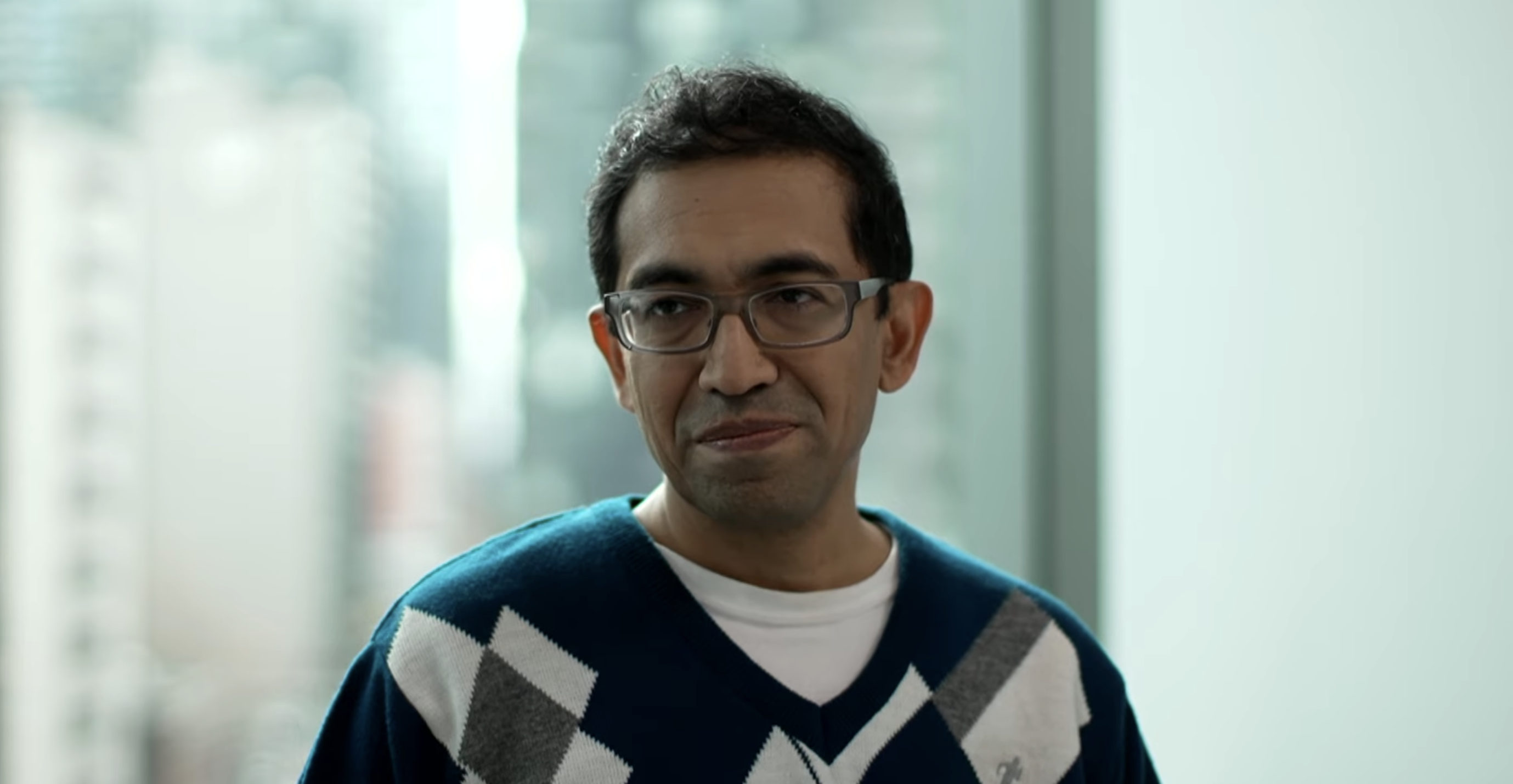(This is the third piece in a three-part series on the Altadena Fires. The second part can be read here.)
While the California Building Industry Association spent nearly $2.5 million on lobbying in 2024, the 2025 fires are projected to become the costliest disaster in U.S. history.
One preliminary estimate assessed the total property and capital losses ranging between $76 billion and $131 billion, with insured losses of up to $45 billion. The previous record for the costliest U.S. wildfire was the 2018 Camp Fire, at $12.5 billion in insured losses.
Over the last five years prior to 2025’s fires, California has been hit with between $50-100 billion in damages from extreme weather events. Nationally, there were 27 weather and climate disasters costing more than $1 billion in 2024 alone, causing a combined $182.7 billion in damages and 568 fatalities. This follows 2023’s record-breaking 28 billion-dollar disasters with a total price tag of at least $92.9 billion .
Fires that burn into developed areas incur the most damage to structures and are therefore the most costly. Compared to the 40,000 acres burned in the 2025 fires, the 2009 Station Fire scorched an area four times as large — 160,000 acres — but only resulted in $94.7 million of damages, most of which came from the direct cost of fighting the fire. The Station Fire ignited in the hills of the Angeles National Forest, coming near but never significantly overlapping with the foothill communities of La Cañada Flintridge, Pasadena, Glendale, Acton, La Crescenta, Juniper Hills, Littlerock, Altadena, Sunland, and Tujunga. It burned only 89 residences and 120 other structures.
When wildfires incur massive economic damages, everyone in the state ends up paying for it.
Between 2018-2022, both insurance premiums and year-to-year nonrenewal rates were higher in California zip codes recently affected by wildfire than nonaffected zip codes. In 2019, immediately following the 2018 Woolsey fire, which affected Malibu and areas surrounding the Santa Monicas, 3.3% of homeowner’s insurance policies for Pacific Palisades neighborhoods were not renewed compared to 1.0% for California as a whole. Average 2022 annual premiums for Malibu ran up to $8,311, while premiums for a zip code with comparable annual median income averaged only $2,803 in 2022.
When insurers stop offering renewals or when premiums rise above an acceptable threshold for property owners, these property owners are more likely to seek coverage under the state’s “insurer of last resort.” The FAIR Plan, California’s residual insurance market, continues to be the soft landing for property owners falling outside the traditional insurance market. FAIR grew from 140,447 in-force policies in 2018 to 555,868 in-force policies in 2025.
The number of FAIR Plan residential policies in Pacific Palisades increased by 85% from 2023 to 2024, compared to 40% across California as a whole. This growth led to an unprecedented amount of exposure of $649.4 billion in 2025. As of November 2023, FAIR has not issued any publicly available guidance on the assessment mechanisms of the plan, nor any guidance on how insurers may recoup assessments. By February of 2025, California’s Insurance Commissioner Ricardo Lara has given permission for the FAIR Plan to assess $1 billion in emergency fees on member insurers, mostly private insurance companies, in 2025. These companies are allowed to recoup half of the fees from raising rates or extra fees on their policyholders across the state, and it is a safe bet that they will.
Fire insurance and its entanglement with the market emerged in response to the Great Fire of London in 1666, but it was a financialized form of the collectivization of risk by which human societies had already been organized for thousands of years. The formation of institutions, such as co-operatives, guilds, and protostates in pre-industrial societies, already demonstrated the priority placed on mutual protection and responsibility towards mutual survival by early civilizations.
For notable insurance historians, the institution of insurance is one that “most perfectly expresses risk as a collective construct” and understands the inherently collective nature of risk, a concept that proves meaningless “outside the contours of group experience.”
Is our collectivized system of risk undermined by the decisions of a subset of homeowners to locate their homes in fire-prone areas? When individuals make decisions that increase their own risk to be absorbed by the collective, are they chipping away at the collective’s ability to spread risk? Are California residents paying for the expansive ocean views and private beach access for coastal homeowners in the Santa Monicas?
Any honest assessment of housing history should note that the disintegration of strong collective risk management leading to this moment of crisis is nothing new. In 1933, the New Deal created the Home Owners’ Loan Corporation (HOLC) as a government entity, taking up the purpose of refinancing defaulted mortgages to prevent foreclosure in the wake of the Great Depression. In 1934, the National Housing Act created the Federal Housing Administration (FHA) to encourage private banks to make loans that would facilitate the buying of a home without exorbitant down payments.
The injection of private capital into homeownership launched the long trajectory of the financialization of housing, by which residential properties became increasingly valued as investment assets beyond their inherent value as homes. As residential properties were being absorbed into global risk markets, asset managers developed a system to assess risk differentials based on arbitrary demographic indicators, essentially articulating that housing and residents in certain kinds of neighborhoods do not belong in the collective social safety net and therefore do not deserve investments, public or private.
In 1939, HOLC published a set of maps that definitively assigned risk levels to homes by color coding neighborhoods across U.S. cities into four categories, A–D, in decreasing order of desirability. Red zones indicated neighborhoods with a higher population of minorities, often expressed in terms of “racial heterogeneity.” These maps enshrined the term “redlining” to describe the systematic exclusion of certain people from wealth building through homeownership.
After race-based prohibitions of homeownership were outlawed in 1917, governments and white supremacist groups colluded to use redlining and its cousin, restrictive zoning, as workarounds to ensure that nonwhite buyers would be squeezed out of the market. Redlining kept banks from issuing loans to nonwhite buyers who made offers for homes in A or B zones.
Over time, wealth differences widened between white and nonwhite people as a direct result of the inability for most non-white residents to own property. The proliferation of single-family zoning (and even more restrictive zoning laws that designated minimum lot sizes) inflated the sizes of homes wherever they were implemented, all but guaranteeing the structural unaffordability of most homes in “desirable” areas to non-white buyers. The legacy of restrictive zoning as a tool of racial segregation has been made amply clear by past analyses.
In the 191 jurisdictions in the region governed by the Southern California Association of Governments (SCAG), 77.70% of residential land is exclusively reserved for single-family housing, and on average, 72% of the residential land in each jurisdiction is zoned for single-family-only housing. The higher the percentage of single-family-only zoned land, the higher the percentage of white residents in that jurisdiction.
One unfortunate byproduct of segregationist housing policy for Los Angeles is sprawl and, by extension, the easy entry of “natural” disasters into urban and suburban life. Constraints on developing denser neighborhoods have over time forced developers to expand into areas that may not be suitable for housing in the first place, like areas that were already categorized as “Very High Fire Hazard” zones.
The same impulses that created vast swaths of unaffordable homes in Los Angeles and regions across the United States, and an inherently inequitable system for one of the most basic human necessities, also lent a heavy hand in driving the sheer destructiveness of wildfires, leaving no possibility of illusion that the firestorm was an isolated disaster.
So where do we go from here?
In the months immediately following the ignition of the firestorm, Angelenos and residents across the county have mobilized handfuls of neighborhood rapid response networks, pooled millions of dollars of funding in GoFundMe pledges. They have moved innumerable personal necessities, resources, and services towards fire-impacted families, in the process wholly subverting narratives of a Los Angeles that inevitably descends into violence and chaos amidst disaster. Incidences of crime clustered not around looting and arson, as right wing pundits reported, but around much less visible — albeit exceedingly harmful —acts of price gouging undertaken by corporations, which have immediately triggered coverage from community watchdogs and, subsequently, lawsuits.
True to its spirit, Los Angeles has emerged as a bastion of community resilience and solidarity.
No amount of bottom-up resource mobilization, however, should invalidate the need for well-coordinated, mass scale aid and emergency response from public agencies in which taxpayers invest. Although the relationship between the budget cuts to the LAFD in the 2024–2025 budget cycle and the intensity of the wildfires was a misguided talking point, there is no doubt that systematic budget cuts to public services will continue to erode the region’s resilience during climate, natural, and epidemiological disasters of all kinds to devastating effect.
The most recent contract between the LA Police Department and the LA police union, approved in 2023, secured raises for new recruits. This and other provisions in the contract are expected to add $384 million to LAPD’s budget by the end of the four year contract period. Consistently large allocations to LAPD in each year’s city budget as well as LAPD-related settlements and payouts being the largest source of the city’s liability costs every year have already encroached on funding for other crucial services and departments, including the Climate Emergency Mobilizations Office, LA Sanitation and Environment, Department on Disability, Department of Transportation, Bureau of Street Services, and proposed street medicine teams at LAFD, all of which contribute directly or indirectly to the success of emergency response as a whole.
We need to stay vigilant of any exceptionalism when we speak of the 2025 fires. Words like “historic” and “unprecedented” may connect us to the worst devastation we have witnessed in our own lifetimes, but they belie the nature of these fires as anything but “unprecedented,” as any careful reader of Mike Davis would notice. We must learn the lesson from Davis’ chronicles of perennial firestorms that have raged in the Santa Monicas and ones that have destroyed homes since the beginning of the 20th century — as long as there has been development in Malibu.
Well-rounded wildfire response can no longer only be understood as singularly deployed battalions on the frontlines of individual fires after they have broken out. It cannot be understood as home hardening measures alone, which can siphon away much needed resources from long overdue home repairs and upgrades across the whole Los Angeles region. It must include preventive measures like prescribed burns on land stewarded by Indigenous communities for public benefit and, yes, a coordinated process to slow and eventually stop housing development in fire hazard zones.
No emergency management system is complete without a reassessment of how housing is built, resourced, and managed in the region. In contrast with our current reality, in which the housing stock in Los Angeles is essentially defined by corporate ownership, with 67% of rental housing owned by corporate vehicles, a housing system with a majority of public, community, or nonprofit ownership of housing stock, often collectively referred to as a social housing system, could have supported a wholly different disaster response.
Profit-driven behaviors like rent gouging and forced vacancies would be virtually nonexistent, which would have enabled fire-impacted households to access temporary housing via much more nimble processes. Social housing could also meaningfully address concurrent emergencies of homelessness, unhealthy housing, and housing precarity as a whole. A social housing system would take housing units off the speculative market, freeing housing from its financialized purpose as an investment asset and giving full attention to its inherent property as a basic need.
Public, community, or nonprofit ownership of housing would make it much easier to address worsening effects of climate change, with extreme heat being one of the most dangerous crises facing Angelenos, particularly poor, unhoused, and minority Angelenos, this decade. Absent of split incentives arising from profit models, social housing systems would have ample capacity to quickly achieve deep retrofits for energy efficiency, HVAC installations for effective heating and cooling, and distributed energy resources for enhanced community energy resilience.
Above all, a large-scale reallocation of resources is required such that our investments more accurately reflect our values and our needs. Corporate polluters should pay into climate funds to sufficiently cover current funding gaps in making sure that homes are electrified, schools have adequate energy efficient heating and cooling, those who cannot afford to relocate from fire hazard zones can harden their homes. A robust climate workforce must be trained and supported, community funds like Care First must be fully resourced, and community resilience centers must be built en masse, with priority given to neighborhoods with high exposure to natural disasters or extreme heat.
Solutions to minimize workforce impacts during disasters must not be an afterthought. This means everything from community relief funding pools to provide economic support when traditional wages become inaccessible to a certain cross-section of our city, as was the case for domestic workers, landscapers, and small businesses in fire-impacted areas. Incarcerated firefighters must be guaranteed prevailing wages, safety protections, and healthcare, as well as a direct pathway to becoming professional firefighters upon exiting the justice system.
We know disasters like these fires will happen again, most likely with increased scale, intensity, and frequency. Instead of retreating into protectionist isolation in response to disaster, we will have the best chance of withstanding it if we prepare proactively together.
For a moment, let’s turn the dial back to the 1930s, when ideas about public stewardship of the Santa Monicas were on the verge of sparking flames of change. Imagine that they did. A vast expanse of ecological preserves would inspire awe and invite exploration for generations of Southern Californians. When it inevitably returned to Indigenous care, the land would have thrived, having once again embraced the embers of ancestral practice.
This vision does not have to sit unfulfilled in an alternate past. We need to embrace the historic opportunity before us to profoundly reimagine and rebuild the infrastructure sustaining our most basic needs in order to live more resiliently, equitably, and vibrantly.
In years to come, we hope that we will look back on 2025 and remember it as the year that changed the way we take care of our land and our people.










